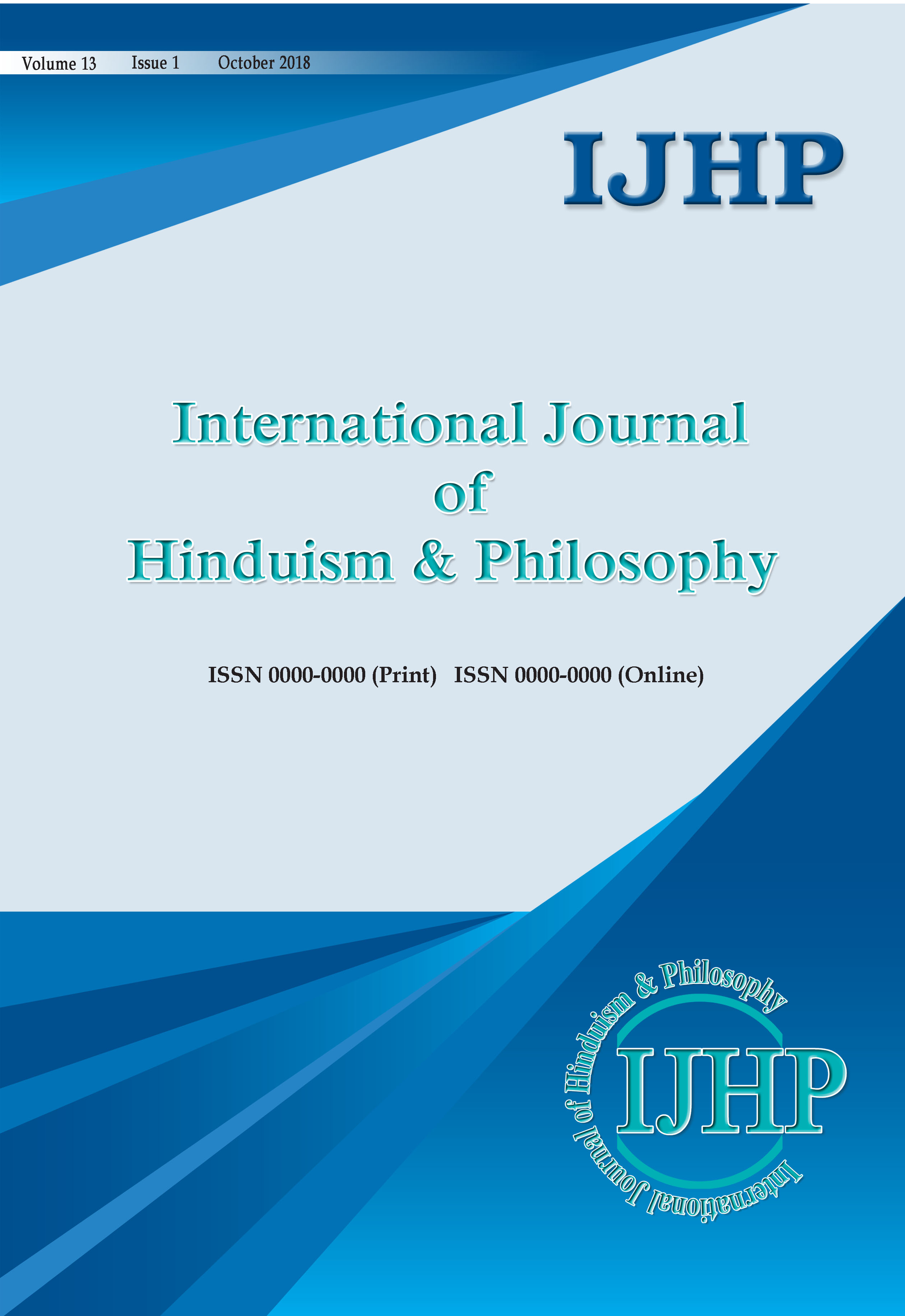Para Brahman, Paramatman, Supreme Personality of Godhead, His three potencies, cit shakti, maya shakti, jiva shakti, oblique incidence, Total internal reflection, Prema-bhakti, Bhakti-yoga
Background and Aims: Different schools of Vedic philosophies hold contradicting views of the existence of Para Brahman’s phenomenal world and His various potencies. Sankaracharaya’s Advaita philosophy advocates a formless, attributeless, indeterminate and acosmic absolute. Vaishnav philosophy preaches Bhakti at the entirety of the supreme personality of the Godhead and serving Him by all means. The great Vaishnav teacher, Sri Chaitanya holds the firm conviction of personalised God; Supersoul is His effulgence as He is the sun disc and His rays are Brahmajyoti. His other two potencies are: (i) His external energy or Maya-sakti which manifests as the material world. And (ii) the marginal energy or Jiva-sakti that constitutes living entities. Both schools of thought stand firm in their convictions of a non-dual, one God. However, non-dualism negates the personalised God, and Vaishnav philosophy accepts personalised God and His phenomenal world and Jiva-sakti – His marginal energy - as real.
This article uses the theory of optics as an explanatory means for bridging the gap between the external and internal potencies of Brahman and the deeper meaning of His marginal energy, which is manifested in living beings as Jiva-sakti. Based on the above theory, the living entity (Jiva-sakti) is a mere interface or illusory physical boundary line between His two potencies – the internal or spiritual potency and the external or material potency. In that aspect, Jiva-Sakti has no real or physical existence and is a mere distorted reflection of Brahmajyoti on the material world. The science of oblique incidence, reflection, transmission, and total internal reflection of optics helps us understand the eternal truth that Jiva-sakti is part and parcel of Brahman. Finally, Bhakti Yoga, which is the most recommended path of liberation in the iron age of Kali Yuga, is examined in the light of the above logic and metaphor.
Methodology: The main Vedic scriptures are systematically analysed and presented to understand the potencies of Brahman. A comparative analysis is made of non-dualism and dualism with personalised God. The oblique incidence, reflection and transmission theory of optics is used as the instrument to build an analogy of the three energies of Brahman. The transmigration from one potency to another, based on the inclination of Jiva’s natural tendencies, is also examined. Finally, Bhakti Yoga as the means of liberation and eternal attachment to the Supreme Personality of Godhead is described based on Vedic literature.
Findings and Conclusions: Pieces of evidence from the various Vedic scriptures and Vaishnav philosophy provide an understanding that God has eternal and unlimited potency. God’s potency is manifested in his two main modes of energy: spiritual and material. The analogies drawn from the science of optics thematically suggest that objects residing inside water are perceived as illusory as the exact location and forms are distorted due to the parallax of the light reflected and projected to the viewer. In this regard, the living being as the marginal energy of God is distortedly projected on the plane of the material world. The true identity of the living being is not the perishable gross body and subtle mind, intellect, and ego, but the eternal spirit-soul Himself. In that aspect, in the light of scientific analogy, both Sankaracharya’s nondualism and Vaishnava philosophy hold the same truth of oneness in God.
Full Text : PDF
- Swami Gyaneshvara Bharati (2023), Dualism and Non-Dualism, Swamij.com https://www.swamij.com/dualism-nondualism.htm (access on 13 July 2023)
- Bhurijana Dasa (2006), Unveiling His Lotus Feet, A Detailed overview of Srimad-Bhahavatam, Cantos 1-4¸ Vedanta Institute of Higher Education, India
- Nemai Chandra Karmakar (2023), Fields and Waves in Electromagnetic Communications, Wiley, Ney York, USA 2023.
- Sadhguru (2021) Karma: A Yogi’s Guide to Crafting Your Destiny, Penguin, Australia.
- https://www.quora.com/Are-64-dimensions-as-mentioned-in-the-Vedas-ancient-Sanskrit-texts-possible (accessed 16 July 2023)
- Mahendranath Gupta (2004) Srisriramkrishnaparahamshakathamrita, Sahityam, Kolkata, India 2004 (in Bengali)
- Srila A.C Bhaktivedanta Swami Prabhupada (1983), Bhagavad Gita As It Is, The Bhaktivedanta Book Trust, Mumbai, India.
- Srila A.C Bhaktivedanta Swami Prabhupada (1985), Srimad-Bhagavatam (SB) Canto 2, The Bhaktivedanta Book Trust, Mumbai, India, 1985.
- Srila A.C Bhaktivedanta Swami Prabhupada (1977), The Science of Self-realization, The Bhaktivedanta Book Trust, Mumbai, India.
- https://en.wikipedia.org/wiki/Hindu_cosmology (accessed, 13 July 2023)
- Srila A.C Bhaktivedanta Swami Prabhupada (1988), Beyond birth and death, The Bhaktivedanta Book Trust, Mumbai, India.
- Swami Chetanananda (2023), Avadhuta Gita of Dattatreya, Advaita Ashrama, Kolkata, India
- Swami Gitananda (2019), Bhagabath Katha, (in Bengali) Udbodhan Karyalaya, Kolkata, India
- Swami Saradananda (1995), The Essence of The Gita, Sri Ramakrishna Math, Chennai, India
- Swami Satprakashananda (1995), The Goal and the Way, Sri Ramakrishna Math; 2009th edition (1 January 1995)
- Swami Gnaeswarananda (SG, 2010), Yoga for Beginners, Sri Ramakrishna Math, India; 2010
- Swami Tapasyananda (2016), Sri Caitanya Mahaprabhu: His Life, Religion and Philosophy, Sri Ramakrishna Math, India, 2016.
- Tridandi Swami Bhakti Prajnan Yati Maharaj (1994) Lord Sri Chaitanya: Ontological and Morphological Concepts, Sree Gaudiya Math, Chennai, India


